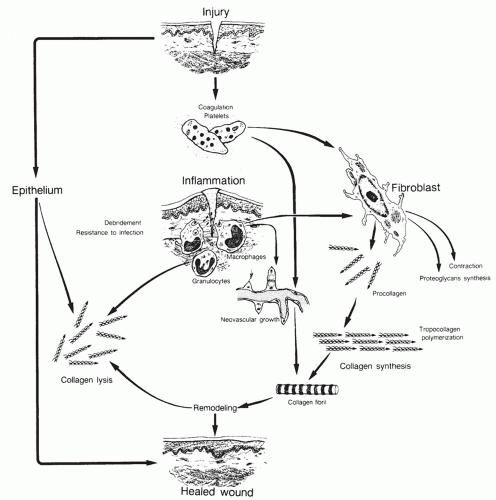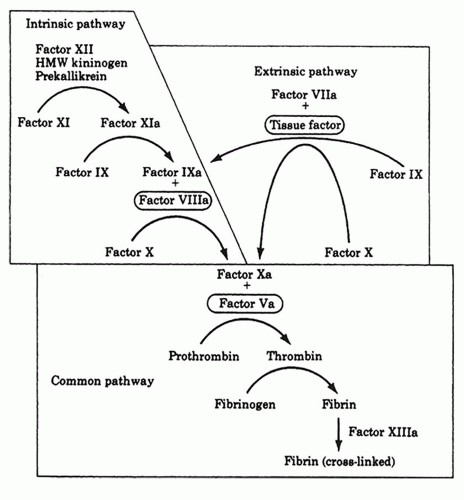Cytokine |
Abbreviation |
Source |
Function |
Human growth hormone |
GH |
Pituitary gland |
Fibroblast proliferation; increases collagen content and tensile strength; anabolism; stimulates IGF-1 |
Epidermal growth factor |
EGF |
Platelets, bodily fluids (including saliva, urine, milk, and plasma) |
Epithelial cell and fibroblast proliferation and migration; activates fibroblasts; angiogenic |
Platelet-derived growth factor |
PDGF |
Platelets, macrophages, fibroblasts, endothelial cells, smooth muscle cells |
Mitogenic for fibroblasts and smooth muscle cells; chemoattractant for neutrophils and macrophages; angiogenic |
Fibroblast growth factors |
FGF |
Macrophages, brain, pituitary gland |
Proliferation and migration of vascular endothelial cells; mitogenic and chemotactic for keratinocytes and fibroblasts |
Transforming growth factors |
TGF |
Platelets, fibroblasts, neutrophils, macrophages, lymphocytes |
Epithelial cell and fibroblast proliferation |
Nerve growth factor |
NGF |
Schwann cell, muscle cells |
Motoneurons, Schwann cells, muscle cells |
Brain-derived neurotrophic factor |
BDNF |
Central nervous system, skeletal muscle, heart, lung |
Support cranial and spinal motoneurons after axotomy |
Ciliary neurotrophic factor |
CNTF |
Schwann cells |
Promote survival and differentiation of neural and glial cells within the nervous system |
Insulin-like growth factor 1 |
IGF-1 |
Fibroblasts, liver, plasma |
Fibroblast proliferation, synthesis of proteoglycans and collagen |
Tumor necrosis factor |
TNF |
Macrophages, mast cells, lymphocytes, other tissues and cells |
Fibroblast proliferation |
Interleukins |
IL |
Macrophages, lymphocytes, other tissues and cells |
Fibroblast proliferation, neutrophil chemotaxis |
Interferons |
IFN |
Fibroblasts, lymphocytes |
Inhibition of fibroblast proliferation and collagen synthesis |
Keratinocyte growth factors |
KGF |
Fibroblasts |
Epithelial cell proliferation |





